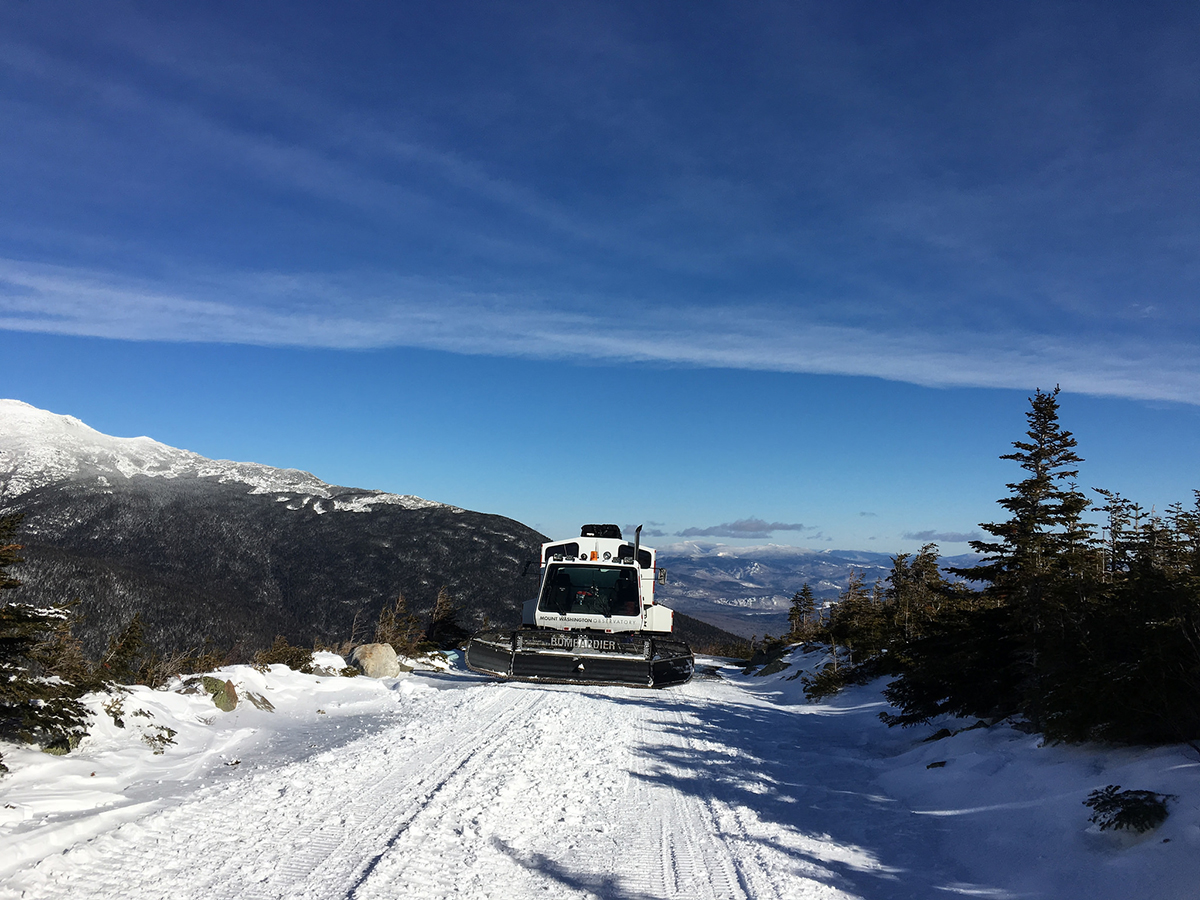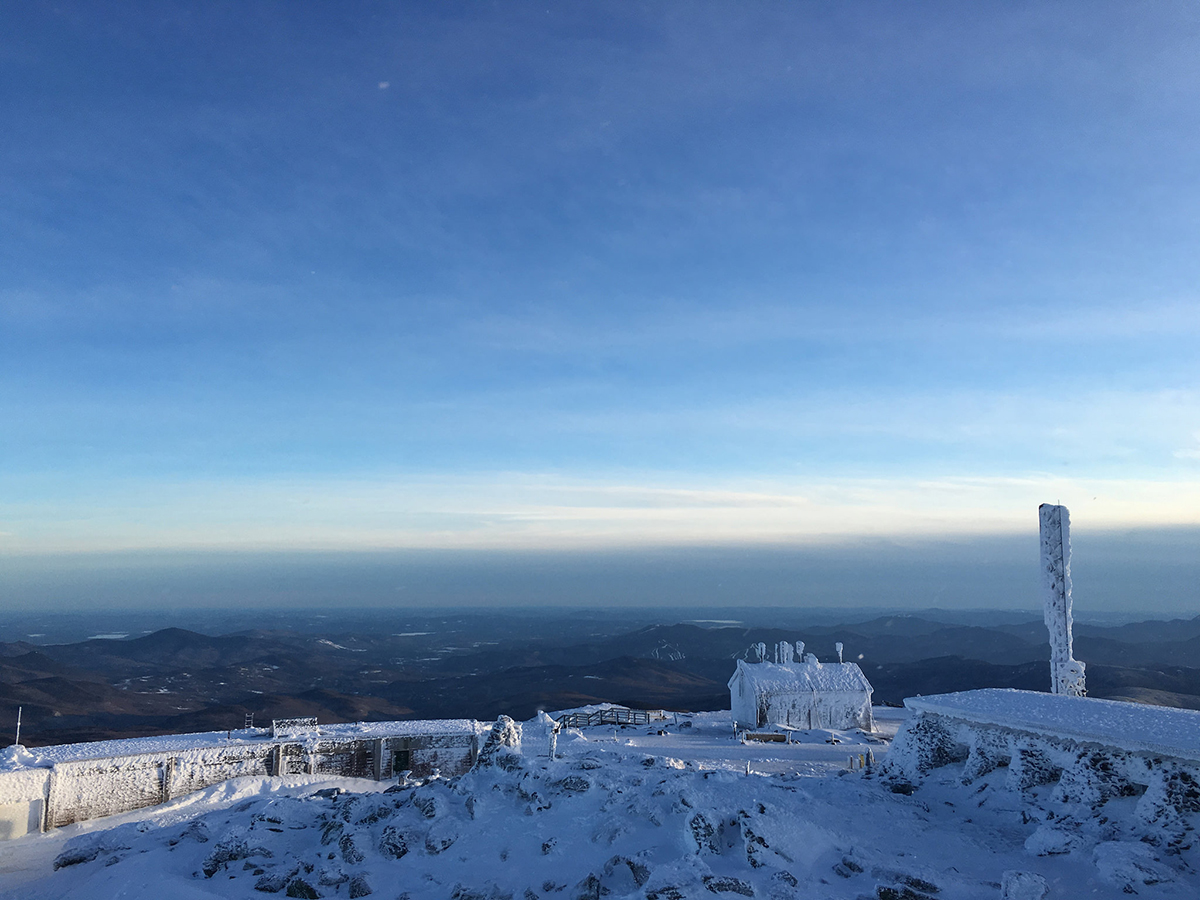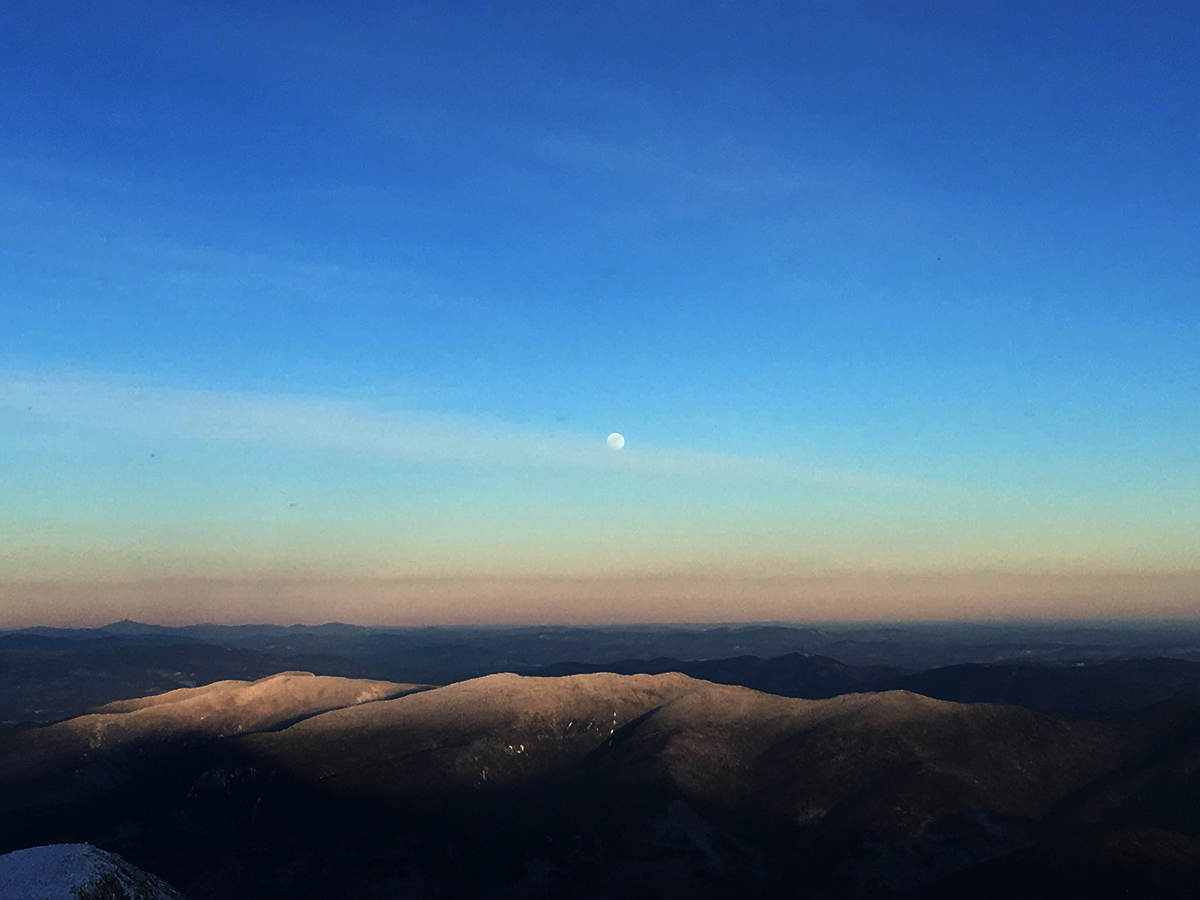The Meteorologist Monks of Mt. Washington

Photo by Kyle Clauss
Slim Bryant finishes his snack of clementine sections and lifts himself into the driver’s seat of the 60,000-lb. Bombardier snowcat idling in a gravel lot at the base of Mt. Washington. Today’s trip will be a leisurely climb up the crown jewel of the White Mountains’ Presidential Range; Slim’s other ride is a Porche 944, which he once piloted up the Mt. Washington Auto Road in roughly seven minutes—a minute shy of the record.
As the snowcat chugs up the narrow pass, the maples thin out and the pines grow shorter and gnarled, like rugged bonsais. (The Germans call these twisted trees krummholz, a guide tells me.) At 4,000 feet, the pines take on an otherworldly shade of emerald, and by 5,200 feet, they’ve all but disappeared under the snow. A decal on the back of the snowcat reads, “Home of the World’s Worst Weather.”
Inside the heated, rumbling cab, Mt. Washington Observatory president Bryan Fowler, a geologist by trade with a rainbow toque and the kind-eyed countenance of a fireside grandpa, expounds on what lies beneath the snowcat’s tank treads. “For marketing purposes, they call it the Granite State instead of the Schist State,” he says. “But it’s all schist here. Some serious schist.” At one stop, I point with my boot to the flecks of gold glittering in an oblong rock lining the path. “That’s Muscovite mica,” he says with great joy and little hesitation.
Fowler speaks of the mountain much like an old sea captain would talk about the sea: with distinct respect for its destructive power—and the beauty wrought from it—hewn out of years spent thrashed around in its elements.
The mountain takes a strange toll on the human body. When the wind reaches 30-40 miles per hour, it becomes exceedingly difficult for our lungs to create the vacuum necessary to breathe. The dew point is such that the threat of dehydration is greater here in New Hampshire than the Sahara. (Fowler says he knows to drink a glass of water when he feels his lips getting crusty.)
As a matter of policy, stray hikers aren’t allowed inside the observatory at the summit, though exceptions are made in emergencies. One time, two hikers pounded on the door for help and spoke what observers believed to be Korean. Upon warming up, it became apparent the two men were English-speaking Americans without a lick of Korean between them, their brains scrambled by hypothermia.

Photo by Kyle Clauss
The meteorologists who inhabit the Mt. Washington Observatory—a futuristic semicircle lodged into the summit, whose interior holds all the warmth and woodwork of your favorite ski lodge—wage a constant battle against rime ice. As the fog rolls in from the Atlantic, the moisture in the air flash-freezes onto stationary surfaces and forms horizontal stalagmites into the wind, creating a unique challenge for anyone trying to maintain sophisticated weather equipment.
The rime, or “snow feathers,” covers everything and can stretch up to four feet in length. All sides of the shack where Alex McKenzie and Sal Pagliuca measured the now-legendary 231 mile-per-hour wind gust on April 12, 1934, the fastest ever recorded by man on Earth’s surface, are padded with three-inches of solid ice. (These days, the observers are quick to note that the record-shattering, 253 mile-per-hour gust on Barrow Island, Australia in 1996 was measured by an unmanned instrument station during a typhoon.)
The observers, who spend eight days on the summit at a time, or more, if the weather doesn’t cooperate, are obsessed with the wind, which reaches hurricane force every two or three days. The passage from the rotunda to the weather station is a hall of fame dedicated to particularly strong gusts, with their respective Hays charts (think spin-art for wind speed) displayed like handprints outside Grauman’s Chinese Theatre.
The country’s major weather systems all funnel into Mt. Washington, a phenomenon not unlike putting your finger over the end of a garden hose. The weather station’s position at the vanguard allows for keen observation of the extreme weather that ensues. In the attached museum, a mannequin is posed hunched over, braced against the wind, with better gear than mine, which discharges little poofs of loose down whenever I put it on. This gives me a moment’s pause.
Over a lunchtime banquet of cold cuts and tortellini pasta salad prepared by the observatory’s volunteers, Bruce and Ayla, Fowler discusses how the observatory has embraced the growing debate over climate change by supplying as much impartial data as they can gather. A few months prior, he was booked for a talk at a local public library, whose visiting authors normally draw crowds of a dozen or so. More than 140 people showed up, Fowler says, and questioned him for two hours.
One observer in workout clothes and headphones paces the rotunda as I write this, his hiking shoes squeaking against the cold, concrete floor. On the other side of the hall hangs a plaque. “This list of those who have perished on or near the northeast’s highest peak is meant not as a morbid curiosity, but as a pointed reminder—this can be a dangerous place!” it reads. “Nobody on this list planned to die here, but some did ignorant or stupid things that led to fatal accidents.” The list of casualties—155 at last tally—resides in a different frame.
Near the entrance to the museum stands a skull-festooned replica of the grave marker erected by the family of Lizzie Bourne, who died of exposure on Mt. Washington in 1855 at age 23. The epitaph reads:
Here in the twilight cold and gray
Lifeless but beautiful she lay
And from the sky serene and far
A voice fell like a falling star
EXCELSIOR

Photo by Kyle Clauss
Before dinner, co-director of summit operations Kaitlyn O’Brien, who got her degree in Oklahoma because it was a good place for similarly awful weather, brings my group onto the roof for the last few moments of daylight. I ask her about the novelty of every minute task she performs likely being the highest in the Northeast. “We like to joke that we’re the highest paid meteorologists in the Northeast—by elevation,” she laughs.
I scale the parapet, the highest point in the U.S. east of the Mississippi, careful not to have my noggin lopped off by the propellor of some weather equipment spinning madly in the wind. Before me, a full moon rises from the band of pink chiffon at the horizon. At my back, the sun languishes in an amber blaze, sinking down behind the valleys of pines that, from up here, look like a field of heather. You’d think I’d feel some kind of superiority, looking down upon, quite literally, the entire Northeast.
Instead, all I can feel is gratitude, and a deep sense of understanding why anyone of sound body and mind would endure all this.

